Interior design is all about creating visual harmony within a space. When choosing furniture and flooring, striking the right balance is key for an appealing look. Dark wood floors have an elegant, rich appeal that can serve as a dramatic backdrop. Pairing these floors with light wood furniture creates an eye-catching contrast that works beautifully when done right.
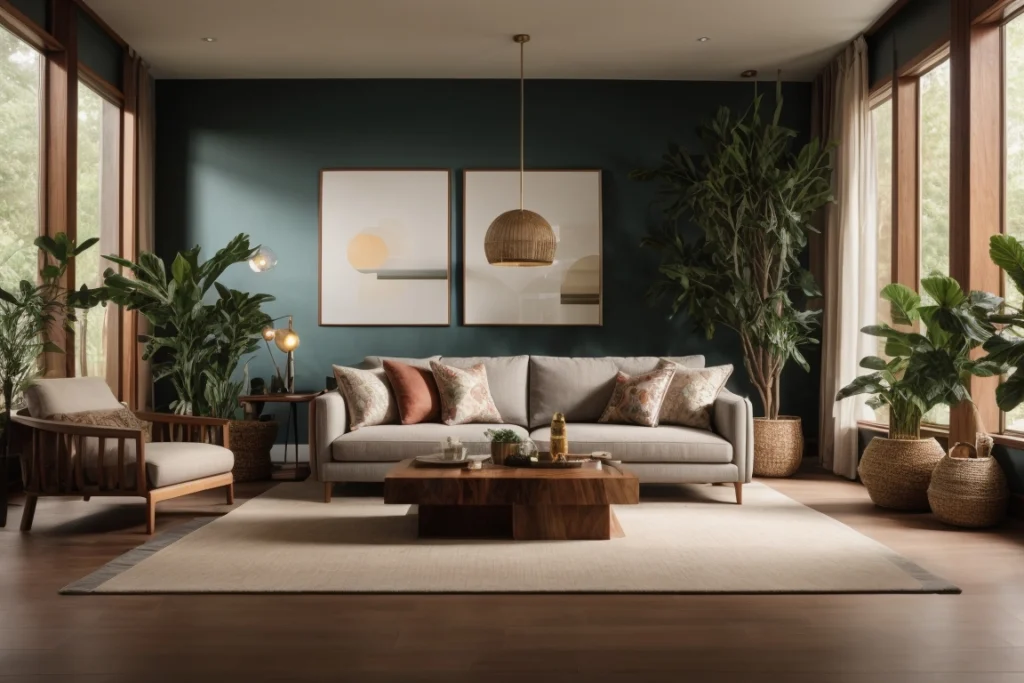
An Introduction to Mixing Light and Dark Wood Tones
The combination of light wood furniture against dark wood flooring has become a popular look in modern interior design. This striking color scheme creates visual interest through contrast. Light pieces stand out dramatically against the dark floors, highlighting the furniture and keeping the space from feeling too heavy or monochromatic.
When pairing light and dark wood tones, the goals are to strike a balance without going too stark or washed-out. The right choices will make the space feel cohesive and polished. With some guiding design principles, pulling off this look in any room is easy.
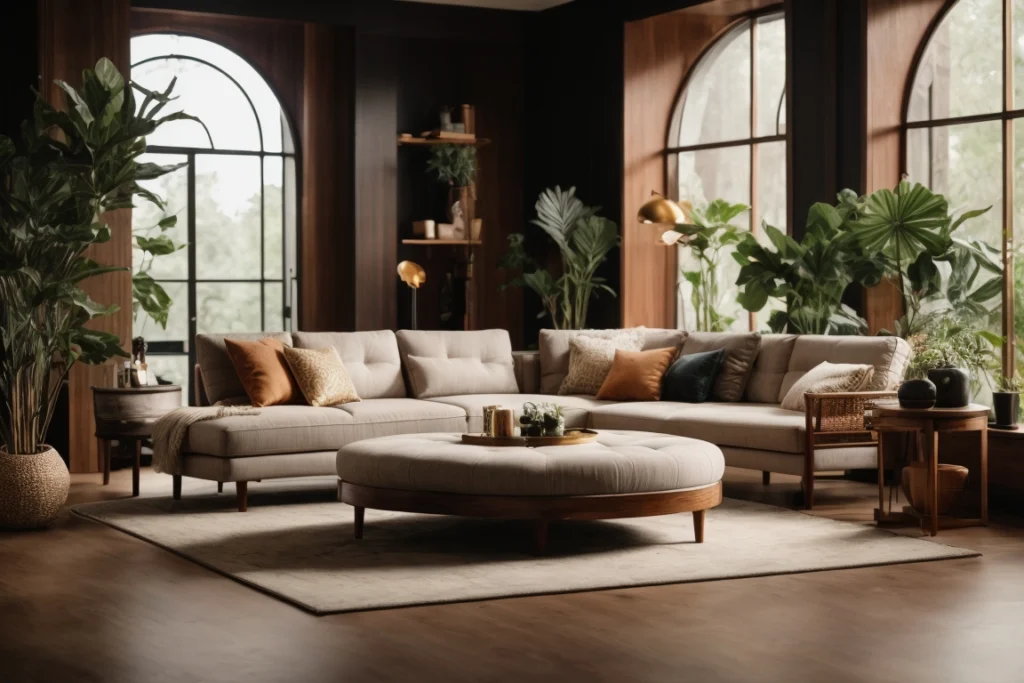
The Appeal of Dark Wood Floors
Dark hardwood floors have a timeless, luxurious appeal. Wood tones like walnut, mahogany and wenge have depth and richness that makes a statement. Dark floors anchor a space and provide a warm, cozy feel. They work well in all design aesthetics from modern to traditional.
The main downside of dark floors is that they can easily make a room feel dark and crowded if the furniture and detailing are also dark. This is where light woods come in – they keep the space open and bright.
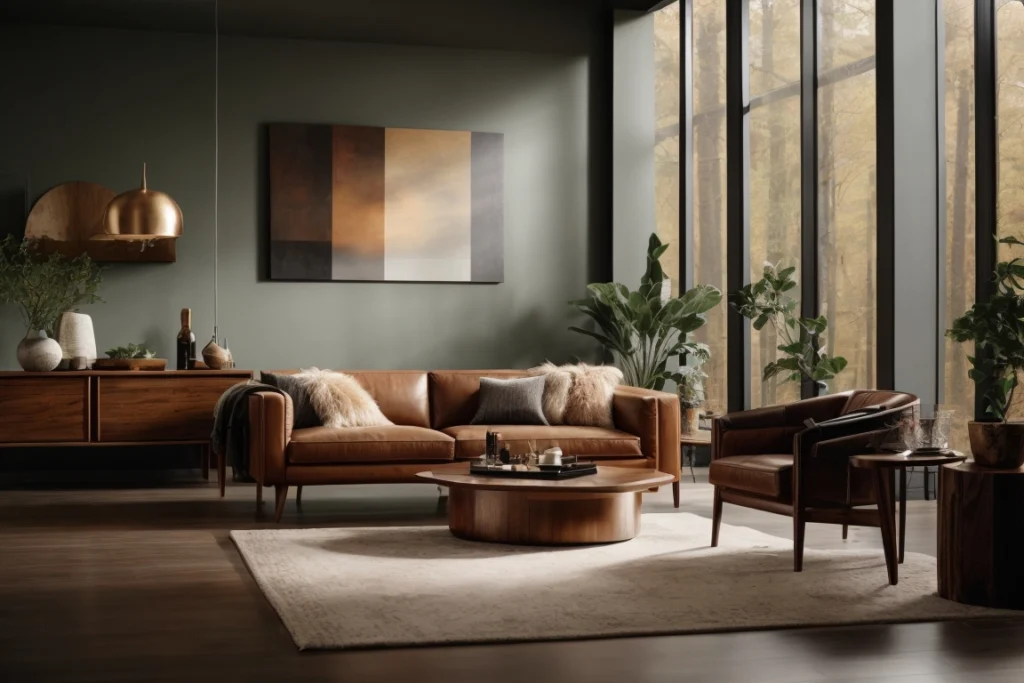
Why Choose Light Wood Furniture?
Light wood furniture complements the dark floors in several important ways:
- Contrast – Light woods contrast starkly against dark floors, creating an eye-catching pop. This contrast makes the furniture the focal point.
- Brightness – Light woods reflect more light, helping balance out the darkness of the floors. This keeps the room from feeling too heavy.
- Highlighting – Light furniture stands against the dark backgrounds, drawing attention and highlighting the pieces.
- Visual weight – Light woods have less visual weight than dark woods, for a more balanced feel.
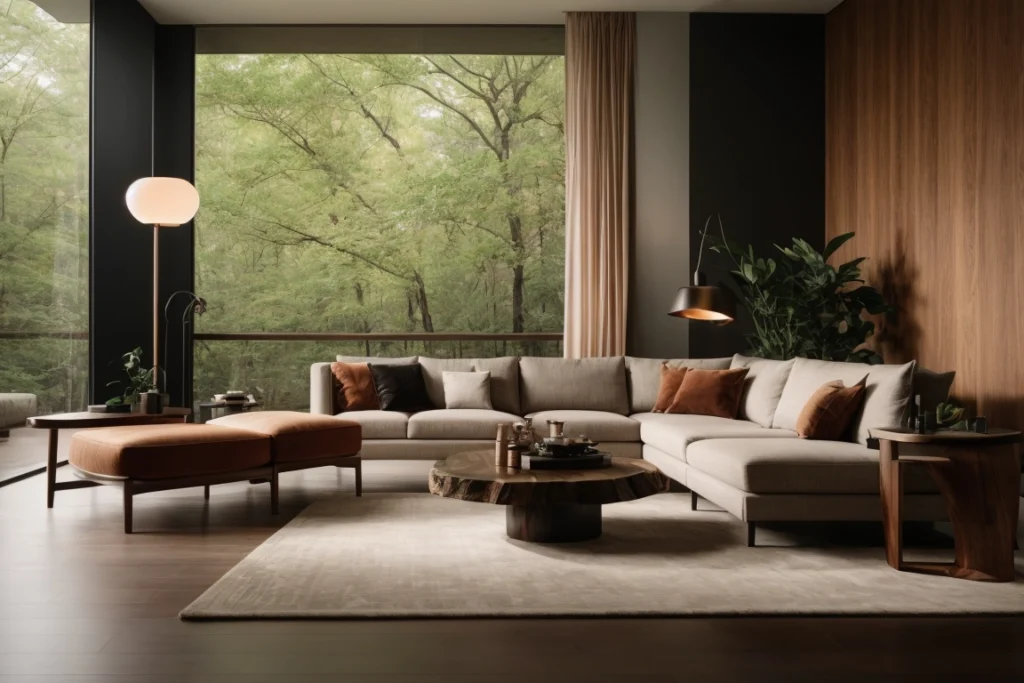
The goal is choosing light woods that work with the dark floors while providing enough contrast. Let’s look at how to strike this balance through color, texture and styling.
The Art of Balancing Light and Dark Wood Tones
Interior design is not simply about choosing colors – the textures, shapes and styling of elements create visual harmony. When pairing light furniture and dark floors, consider how all these factors combine to create balance.
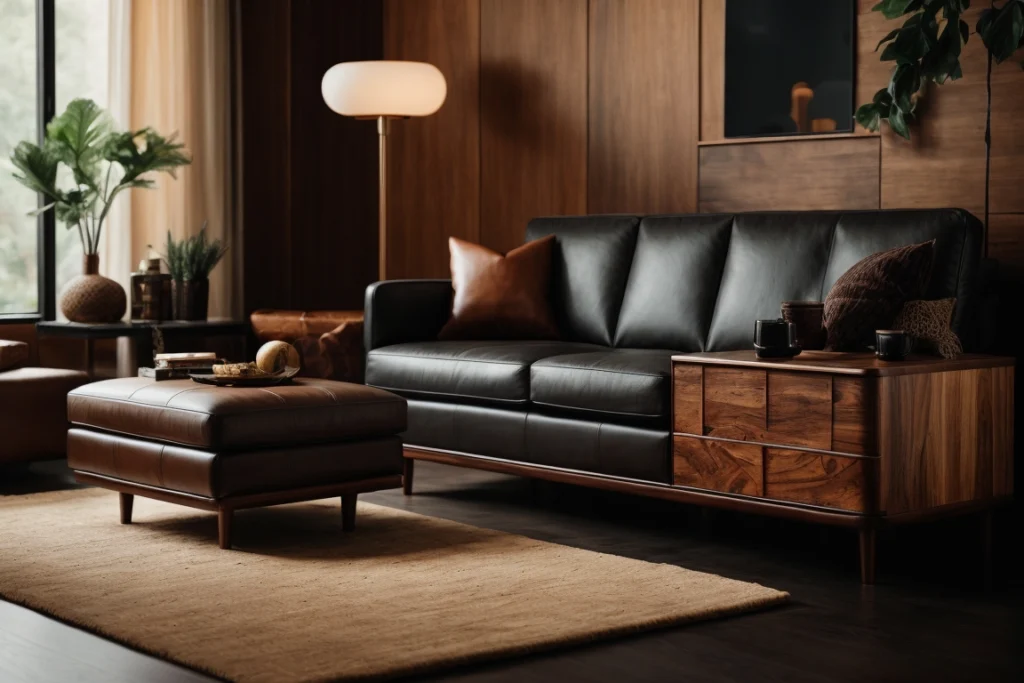
The Role of Color Contrast
Color contrast is the most important factor when pairing light and dark woods. Generally, you’ll want the furniture to be lighter than the floor for an eye-catching look. But there are degrees of contrast to consider:
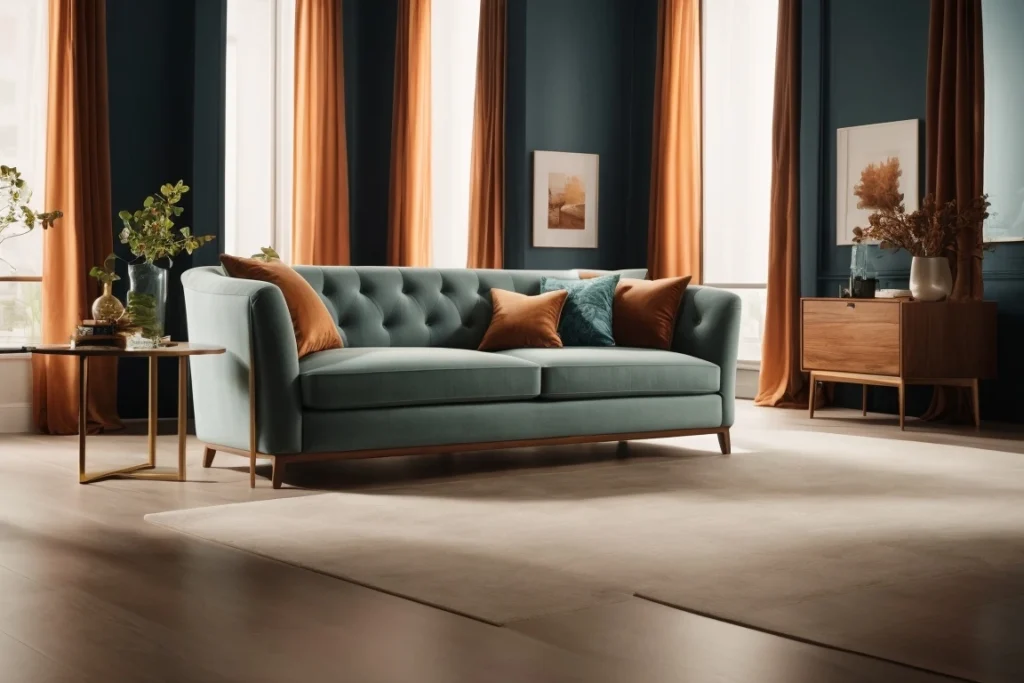
Subtle contrast – Furniture is slightly lighter than floors. Provides cohesion but less drama.
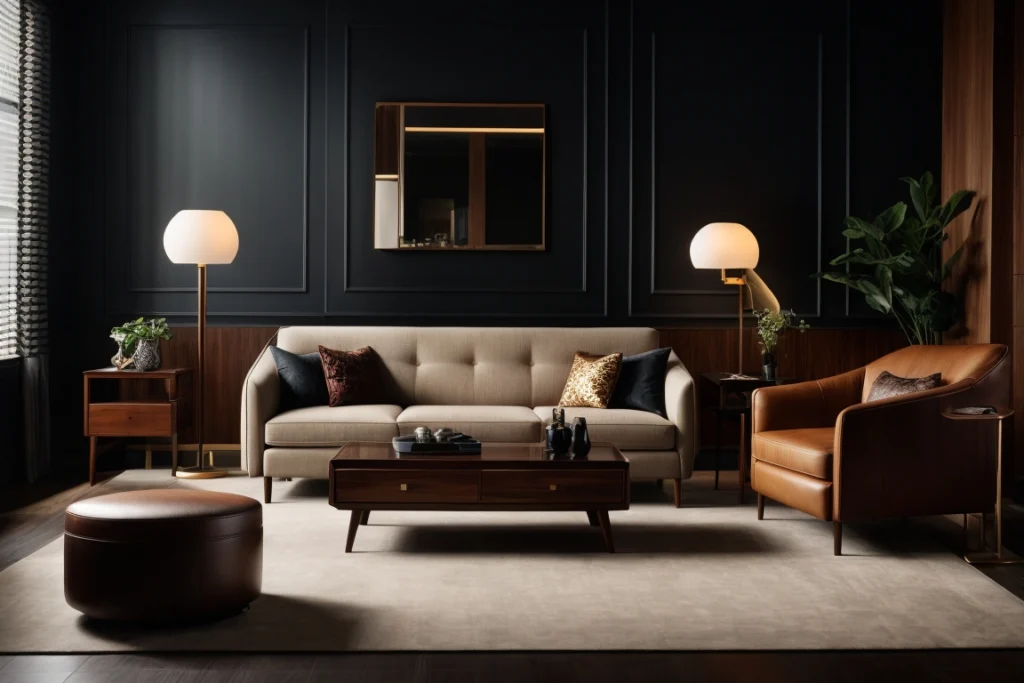
Bold contrast – Furniture is markedly lighter for maximum contrast. Very striking but harder to balance.
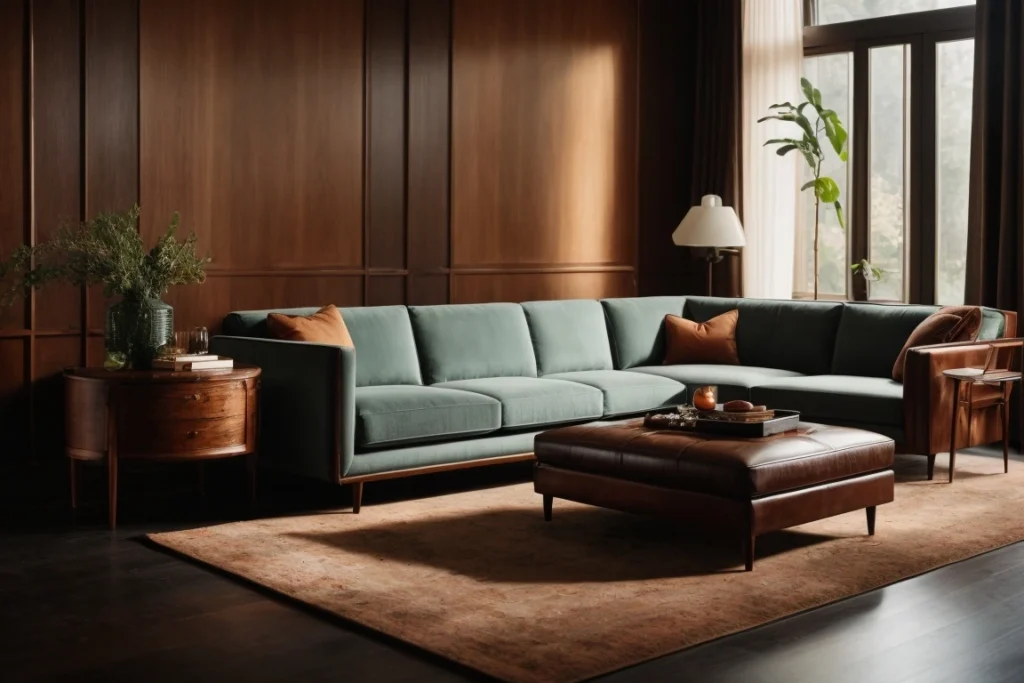
Stark contrast – Extreme color differences can feel disjointed. Use this sparingly.
Aim for a bold but balanced contrast. Very pale woods can look washed-out against walnut floors, while medium woods with reddish tones can feel too close in shade. The sweet spot is often light but warm-toned woods.
The Impact of Texture
Pay attention to how the textures of the woods interact. Dark floors tend to have more noticeable grain patterns. Busy-grained light woods can compete too much, while very smooth light woods can get lost.
Aim for complementary textures. Medium-grained light woods offset the busyness of dark floor patterns nicely. Distressed and wire-brushed textures also pair well, creating multi-dimensionality.
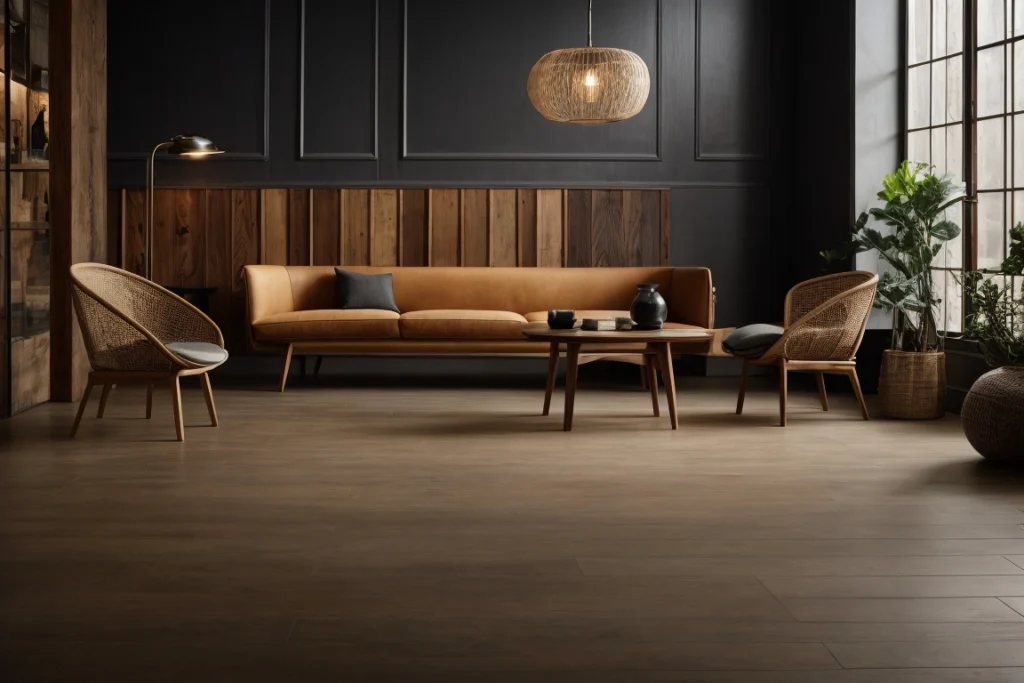
Shapes and Styling Considerations
The shapes of furniture pieces and how they are styled also affect visual weight and contrast. Rounded light wood pieces feel lighter against angular dark floors. Heavy, ornate light woods can seem too bulky.
Using leggy, transparent furnishings creates more separation from the floors. Floating lighter pieces works better than anchoring them. Add contrasts through accents like wood pedestal dining tables over dark area rugs.
Why the Combination of Light Wood Furniture on Dark Floors Works So Well
Now that we’ve explored the elements of balancing light and dark woods, let’s look at why this combination works so beautifully when executed with care:
Contrast Creates Visual Interest
The most basic interior design principle is that contrast attracts the eye. Dark floors have richness but can feel flat and one-dimensional. Light woods layered on top immediately create a focal point through contrast. This makes a space feel tailored and curated.
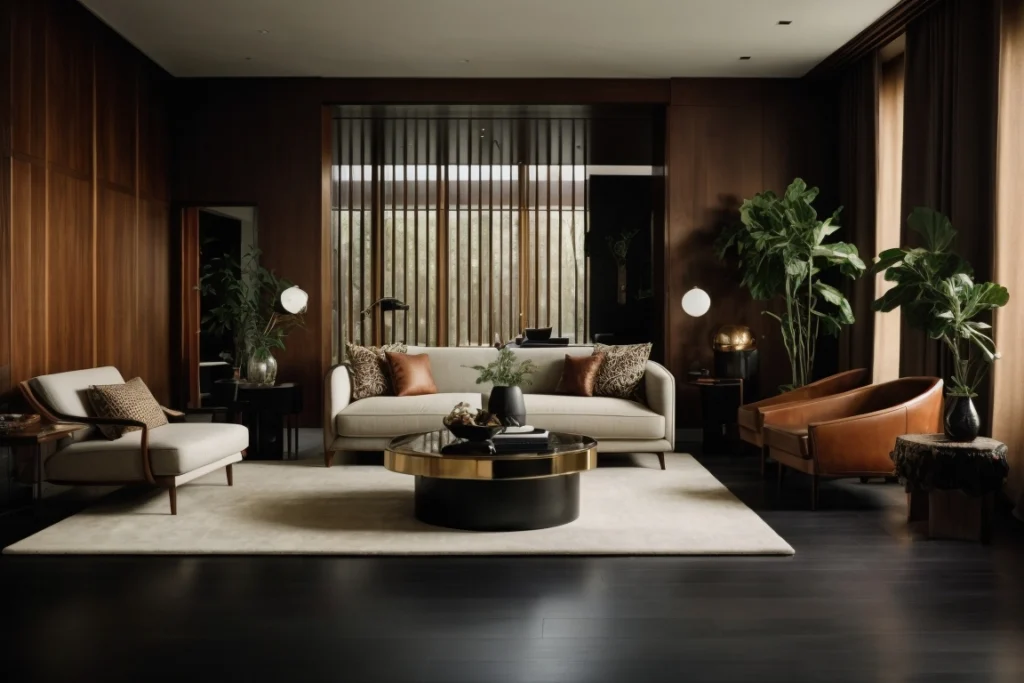
Balance is Key for Harmony
The room can become too monochrome and heavy if dark floors are paired with matching dark woods. But if the light woods are too light, the contrast can feel disjointed and jarring. The goal is just enough contrast to be striking but not stark.
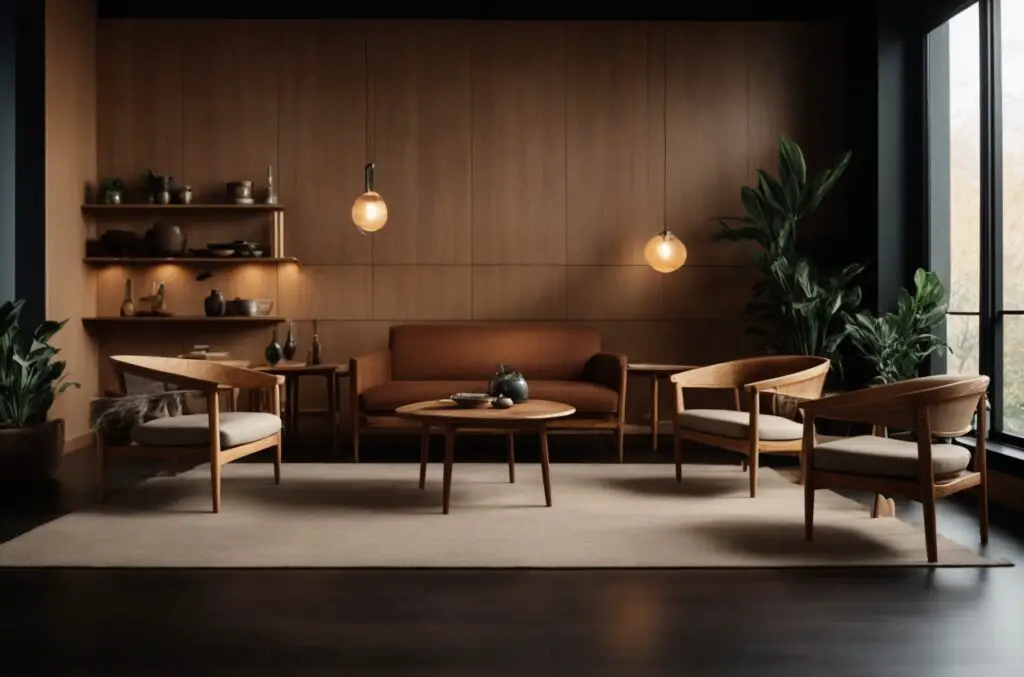
Lightness Brightens the Space
Dark wood floors can easily make a space feel dark and closed in. Light woods brighten the room and keep it open and airy. They reflect light against the darker backdrop.
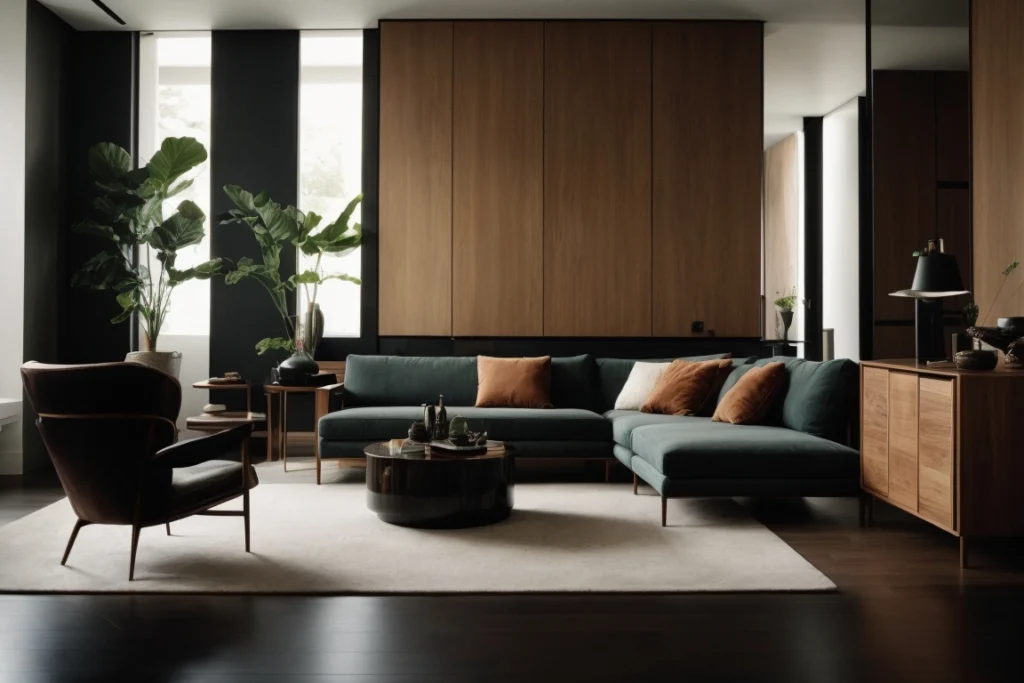
Furniture is Highlighted
Against the dark floors, the light wood furnishings pop out and are highlighted. You notice and appreciate the furniture details more. Dark floors become the perfect neutral backdrop.
When combined tastefully, light woods and dark floors strike that perfect balance between eye-catching contrast and cohesive harmony. With some guiding principles, you can easily achieve this look.
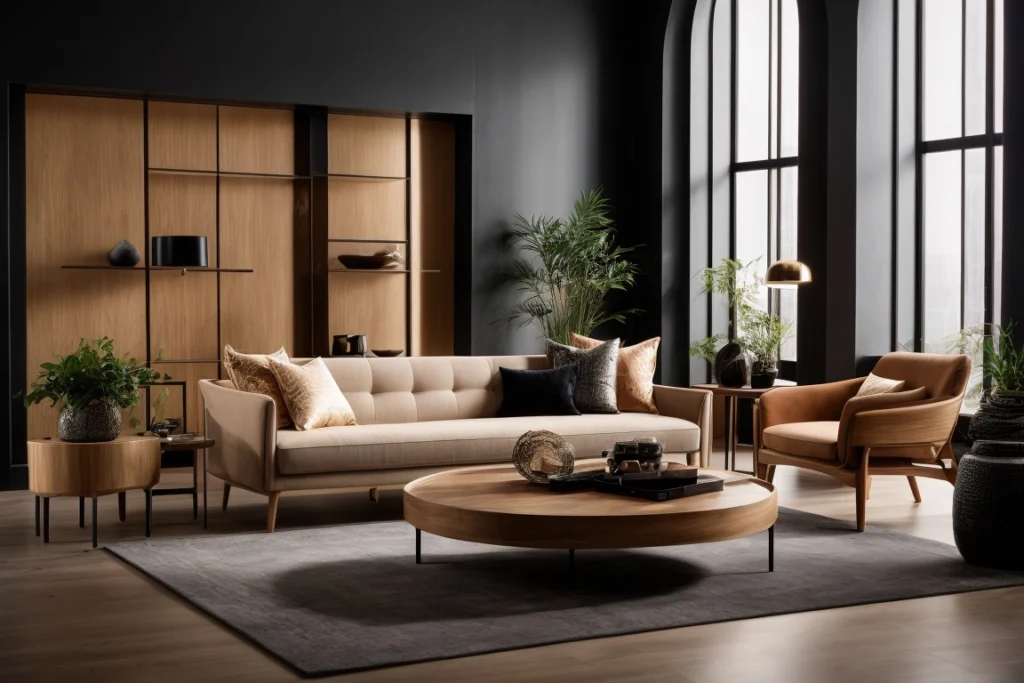
Tips for Choosing the Right Light Wood Tones
Now let’s get practical. When selecting specific shades of light wood furniture, keep these tips in mind:
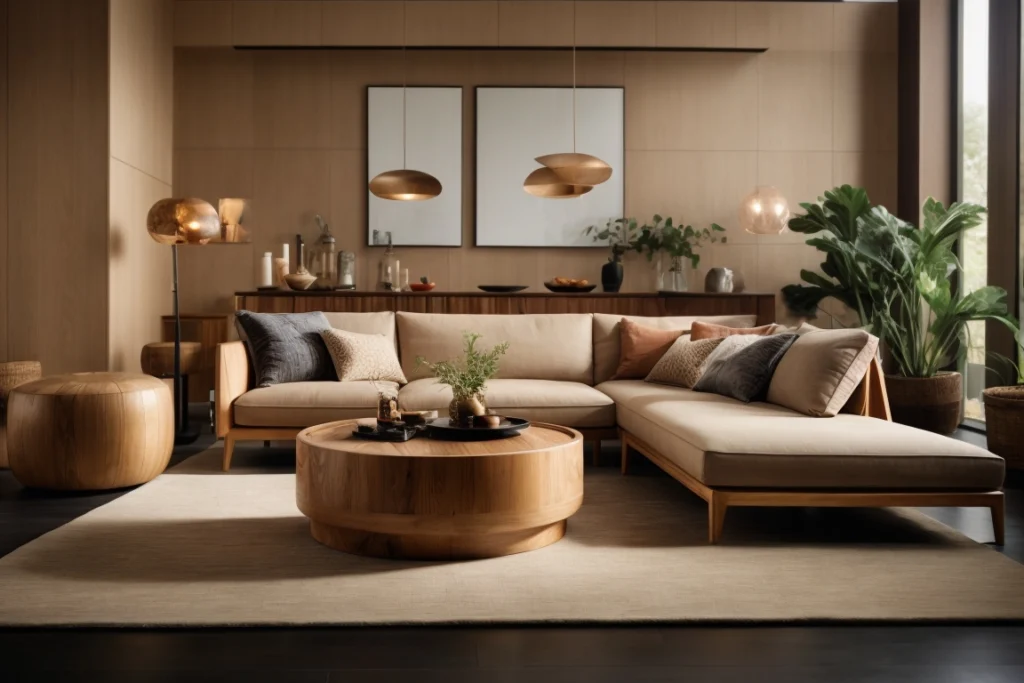
Opt for Oak, Maple or Birch
Some safe light wood choices that pair beautifully with dark walnut, mahogany or wenge floors include:
- White oak – Provides nice contrast while staying warm-toned
- Maple – Light but still has some neutral undertones
- Birch – Has yellowish notes that complement darker reds
Stay away from very ashy/grey toned woods as they can clash. Unfinished very pale woods can also look too stark.
Swatch Test Different Woods
Don’t just order furniture online in a light finish. Bring home physical swatches of veneers and place them on the floors. Look at them in both natural and artificial light. This gives you a sense of how the shades interact.
Factor in Room Size
You can get away with more color contrast in a smaller space since furnishings are closer to the floors. You may want to go slightly more subtle for larger rooms so the space feels cohesive.
Consider the Lighting
Rooms with ample natural light can handle more contrast. Low lit rooms may need lighter woods so the space doesn’t get too dark. Boost lighting with extra lamps and sconces.
Know Your Style
Contemporary and transitional spaces can handle very bold contrast. Traditional rooms may need more subtle wood tone pairings for a seamless look. Don’t go too stark if it disrupts your overall aesthetic.
With these practical tips, you can confidently mix and match light wood furniture options until you find pieces that complement your dark floors beautifully.
Achieving Subtle Contrast Between Light Furniture and Dark Floors
For some designers, very stark color contrasts can feel jarring and disjointed. The light and dark woods compete too much. If you prefer a more peaceful, cohesive look, aim for light woods that are slightly lighter in tone than the floors. Here are some ideas:
Go for Medium-Toned Woods
Rather than very pale woods, opt for lighter medium woods with some tan/brown notes rather than very pale woods. Subtle grain variations will also cut down contrast. Think alder, elm, chestnut or lighter-stained oak.
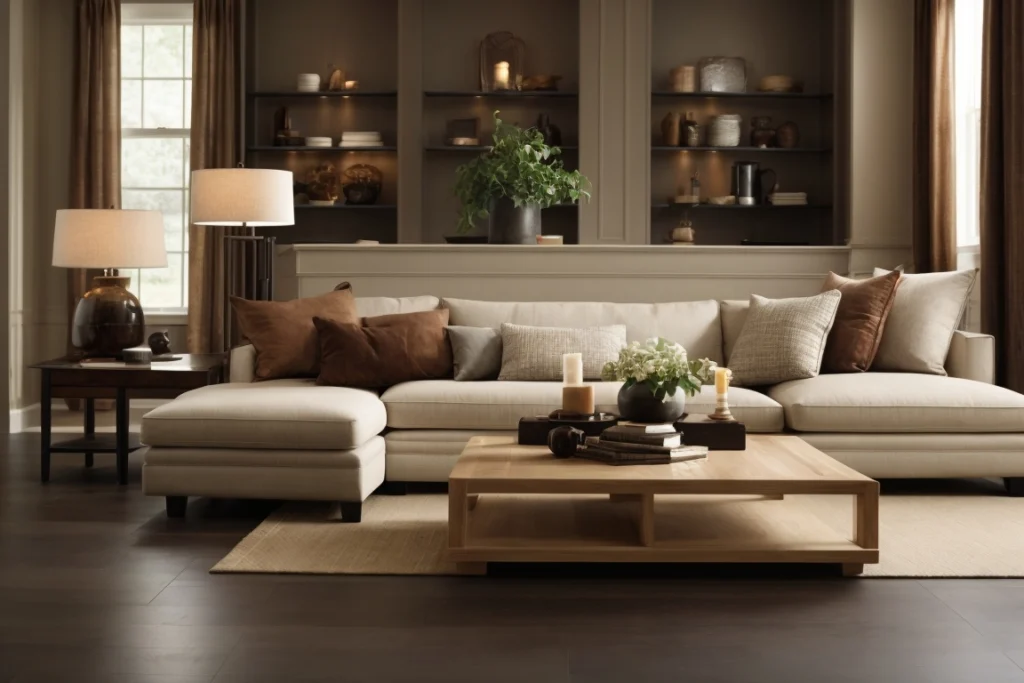
Repeat Hues in the Floors
Look for light woods containing similar reddish-brown undertones as the floors. This ties the shades together. Just make the furniture an oak tone or two lighter.
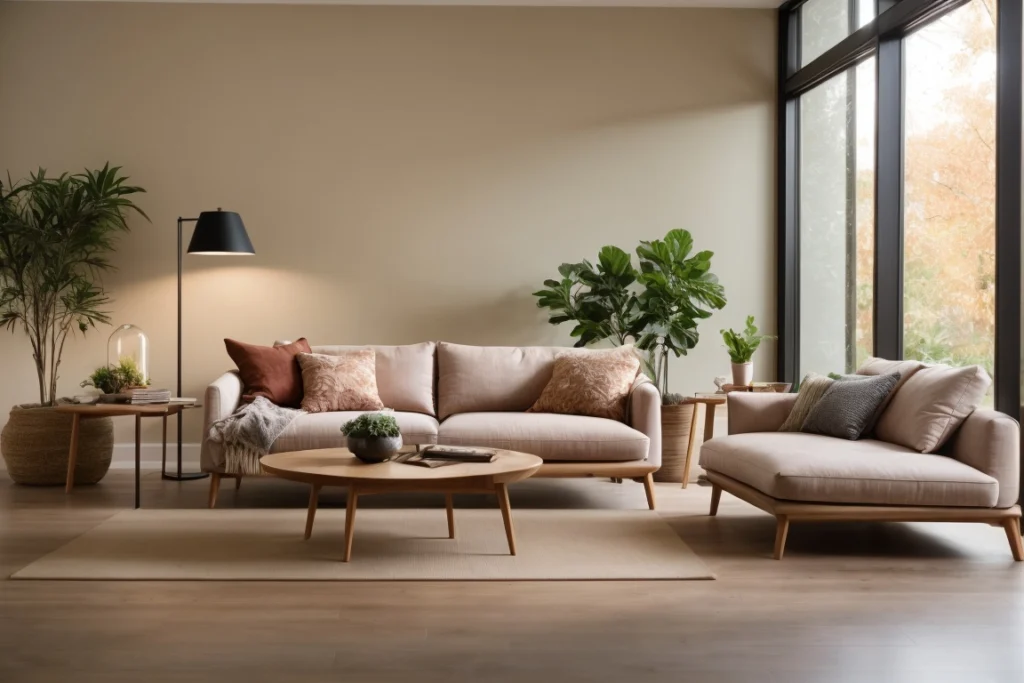
Use Smoked Finishes
Smoking light woods adds darker tones that bridge the gap with the floors. It mutes the wood while adding character. Smoked maple is a great choice.
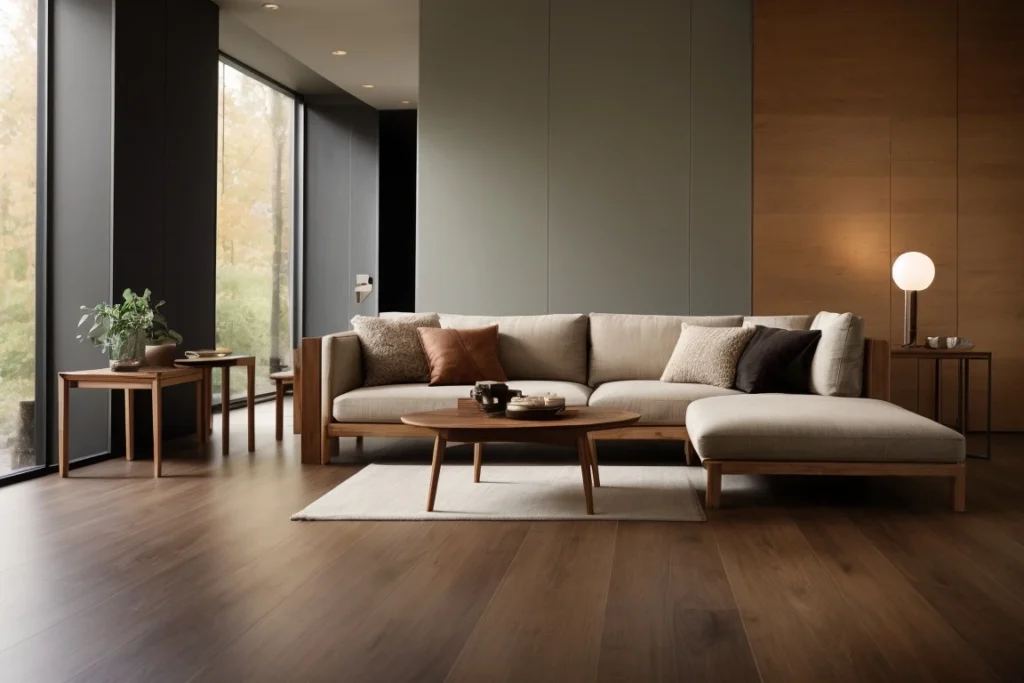
Add Warm Stain Colors
Applying stains in warm hues like honey, caramel or fruitwood to light woods warms their undertones. This prevents that stark contrast against dark walnut floors.
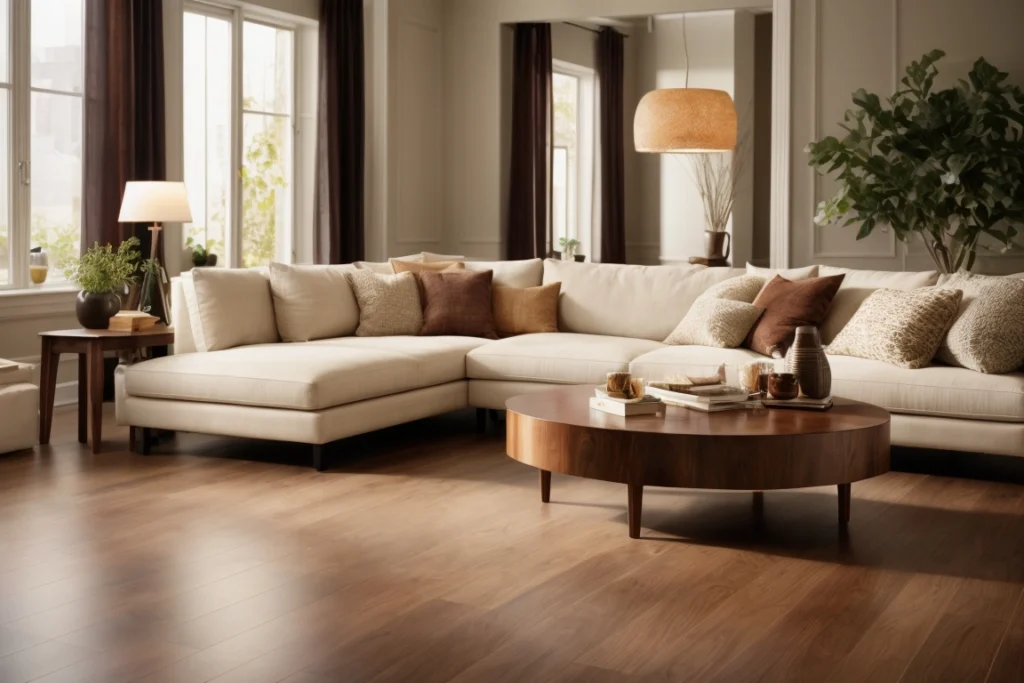
Consider Sheen
Glossy finishes on light furniture can make the contrast starker. Opt for satin, matte or rubbed finishes for a subtle effect.
With small shade differences and muted finishes, you can achieve balance with light and dark woods that’s striking but still super polished.
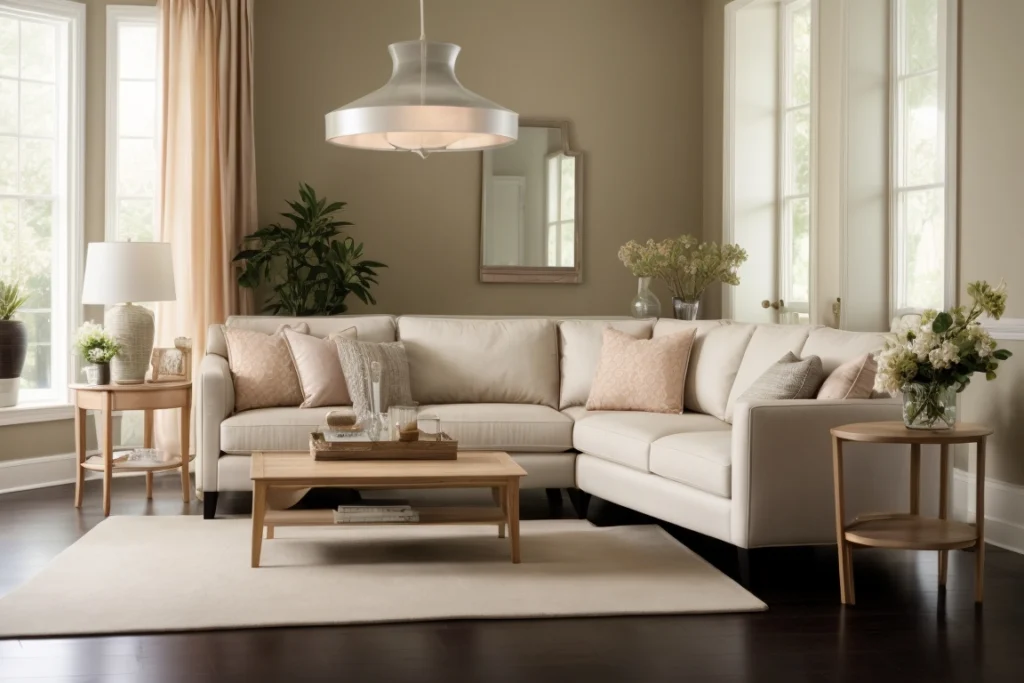
Embracing Bold Contrast Between Light and Dark Woods
For those who want more drama and visual pop, maximizing the contrast between light furniture and dark floors is the way to go. This eye-catching style makes the light woods stand out. Here are some tips:
Opt for Crisp White Stains
Bleached white finishes on light oak, maple, ash or birch create instant contrast against dark floors. It’s a bold but elegant statement. White stains feel brighter and crisper than weathered gray finishes.
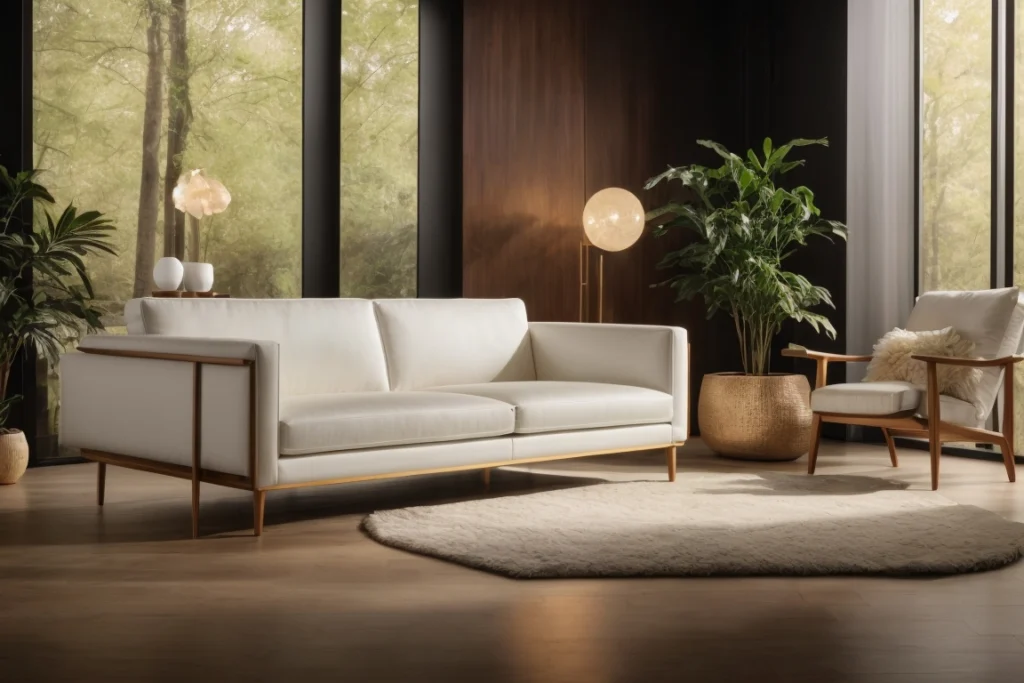
Use Light-Colored Metals and Glass
Incorporate light-colored metal framing and legs, like brass or chrome, on wooden furnishings. Clear glass tops also lighten up wood pieces nicely.
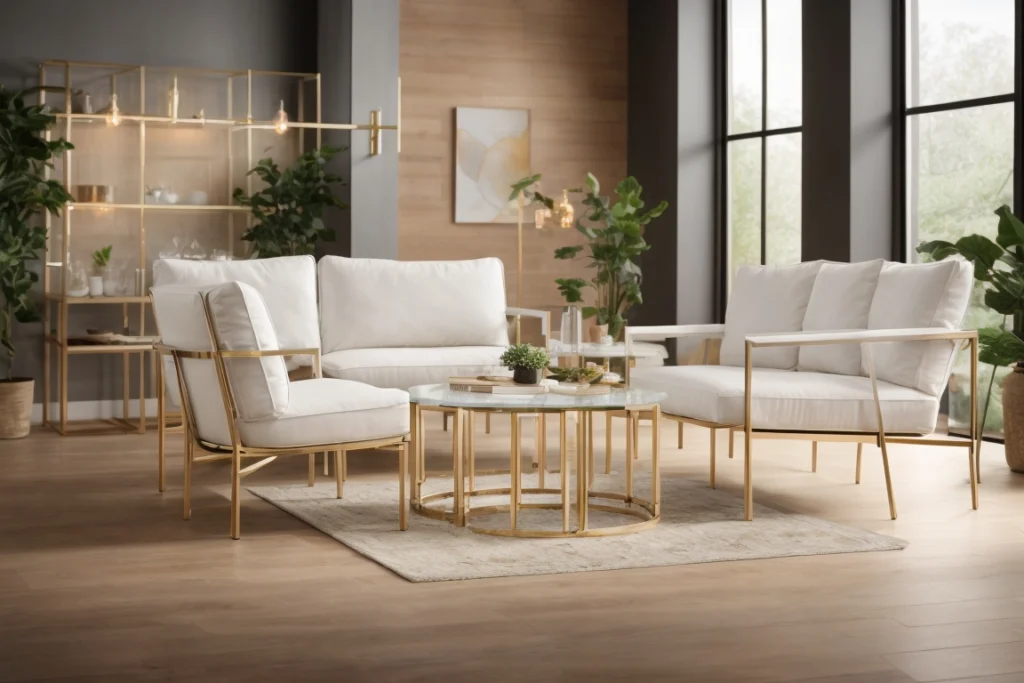
Add Pale Neutral Upholstery
White, cream, light gray cushions and upholstery fabrics will make light wood furnishings pop even more than dark leather. Use sparingly as accents.
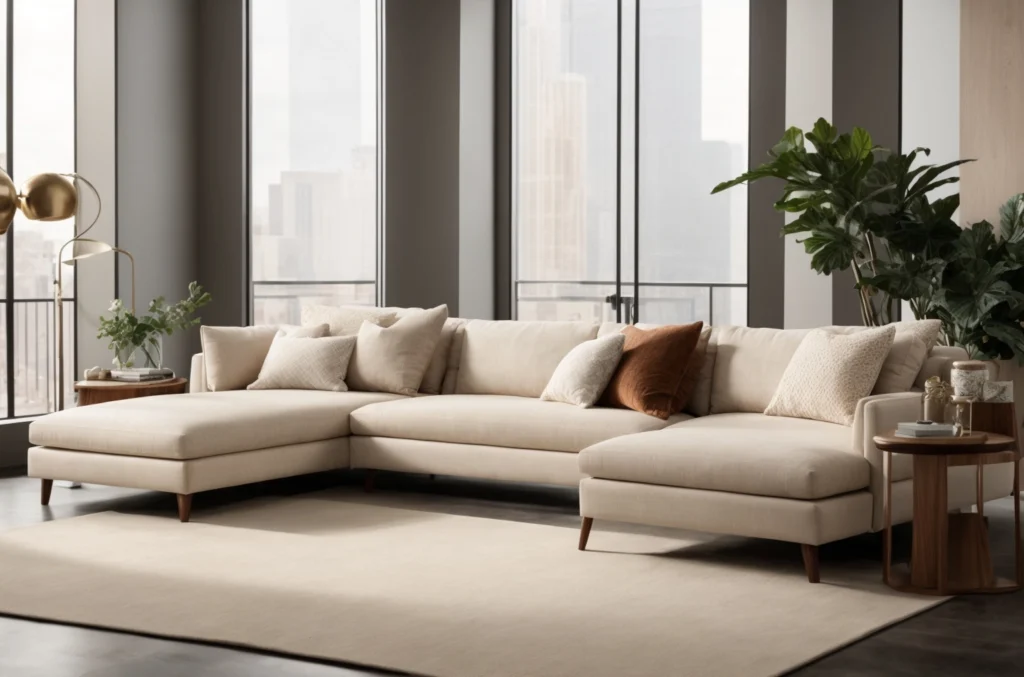
Play with Exaggerated Silhouettes
Light-toned wooden furniture with sculptural or transparent shapes stands out boldly against dark sleek floors. Think spindle legs, open arm chairs or glass coffee tables.
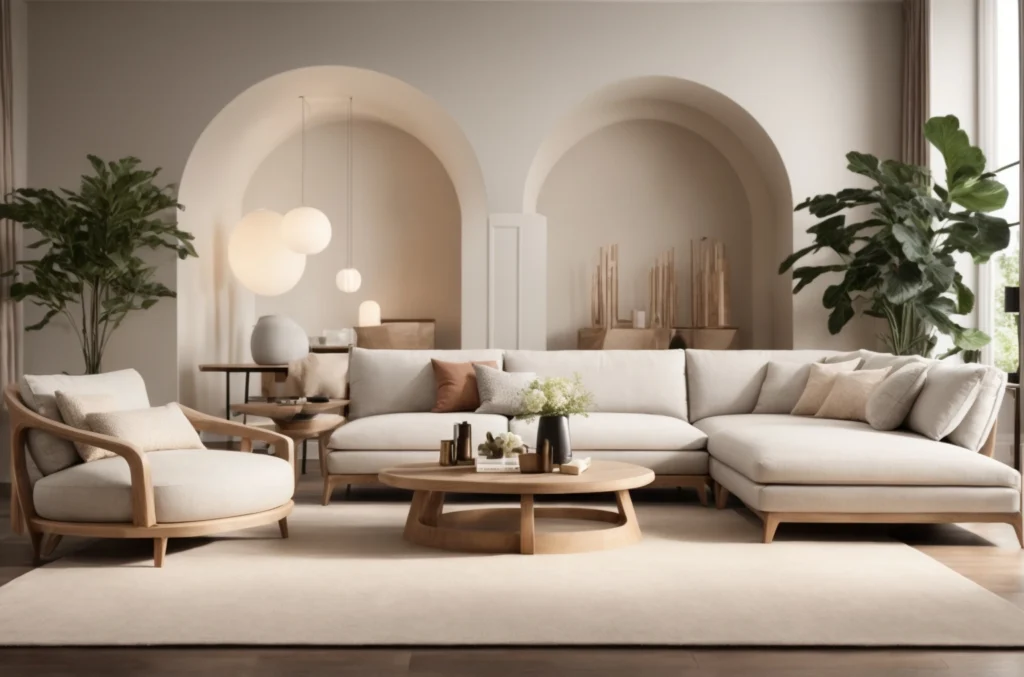
Place Furniture on Light Rugs
Placing light sofas, beds and consoles on pale shag rugs or sheepskins amplifies the contrast compared to placing them directly on dark floors.
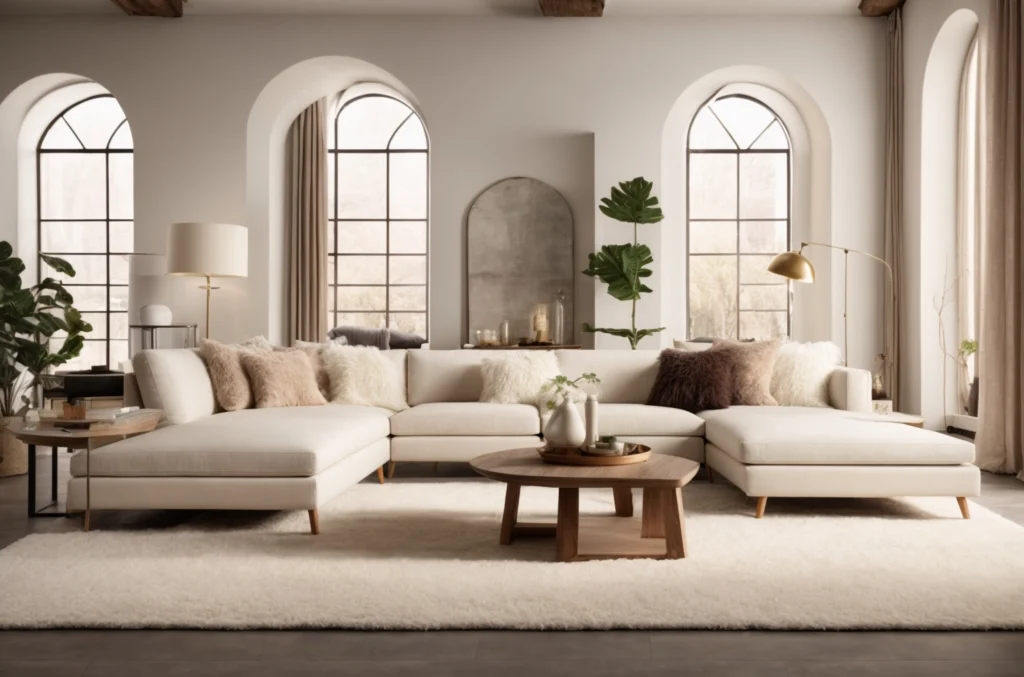
Embrace Modern Minimalism
The bold light wood on dark floor look goes hand-in-hand with contemporary styling. Clean lines and lots of open space show off the colors.
The most daring designers may paint woods an ultra-light tone like blush pink for a super punchy effect. Use it sparingly for focal points.
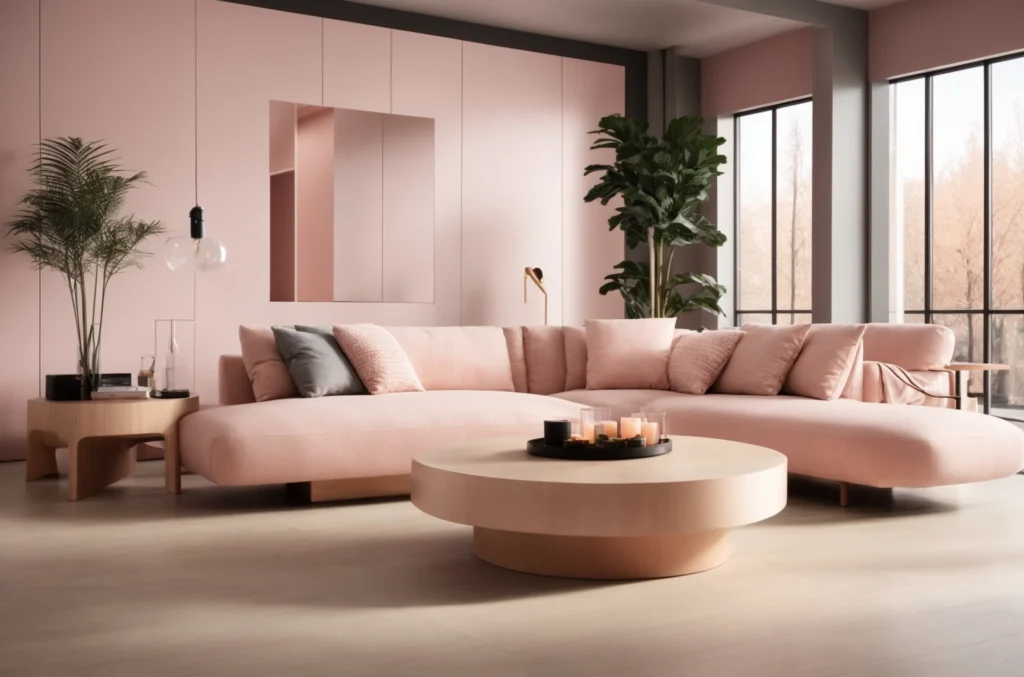
Area Rugs Add an Extra Layer of Contrast
An easy way to make light wood furnishings stand out against dark hardwood floors is to add light-colored area rugs.
Rugs Frame and Anchor Pieces
Placing sofas, beds and other large pieces atop light rugs frames them and makes them stand out compared to darker floors. It’s a quick visual trick.
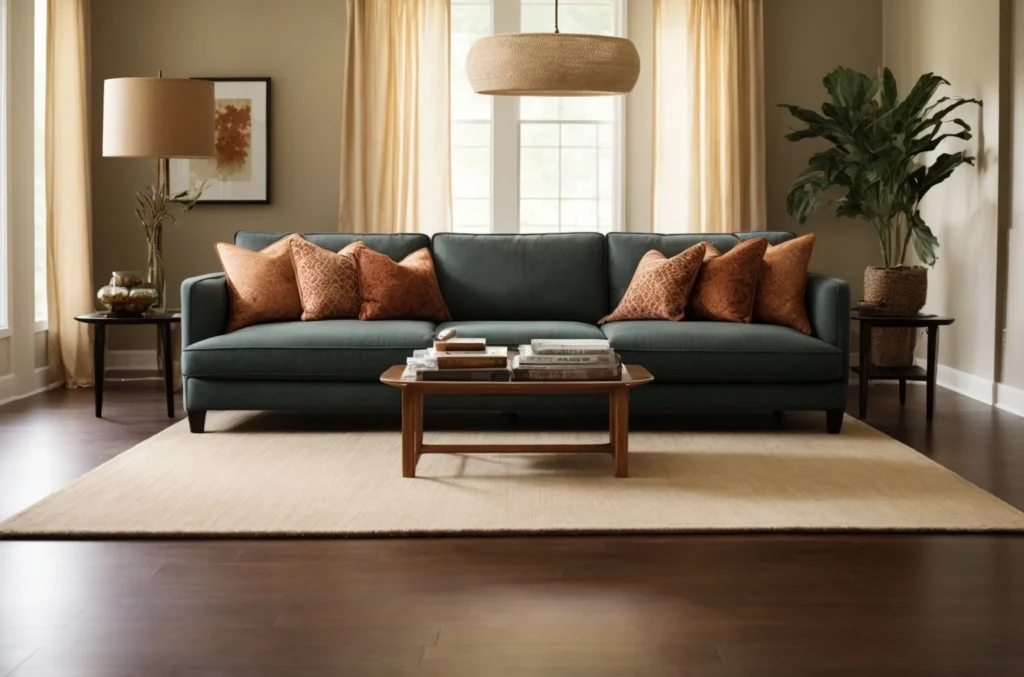
Soften Hard Wood Edges
Light fluffy rugs underneath dining sets or coffee tables soften up the hard edges and create separation from the harsher floors.
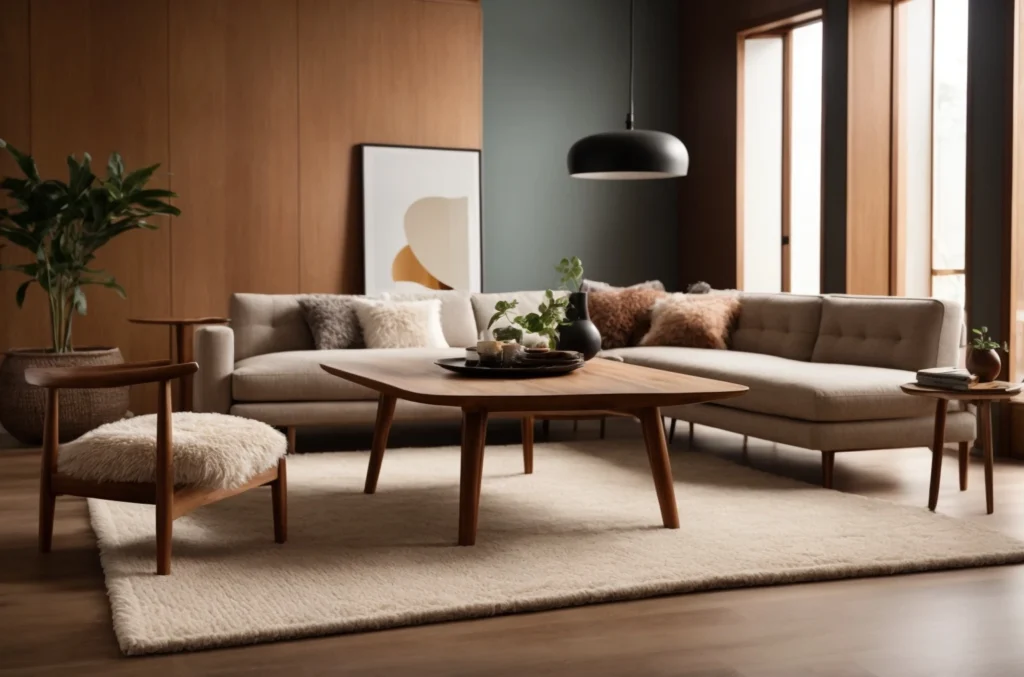
Rugs Can Tie a Room Together
If you have light woods mixed with some darker antique pieces, using a common light rug brings cohesion through color repetition.
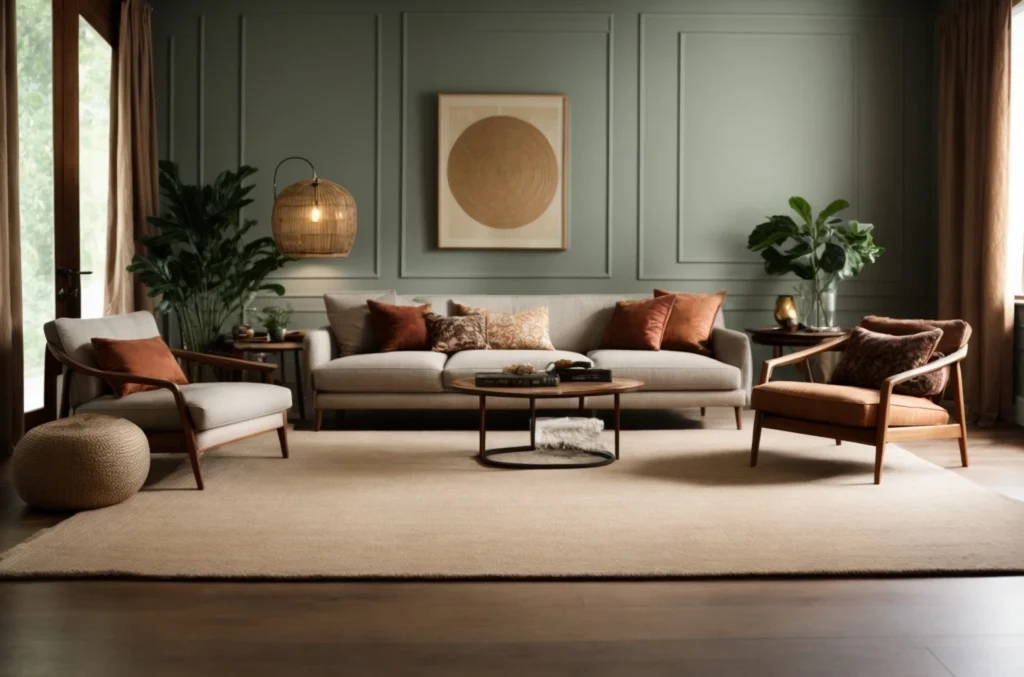
Define Specific Zones
Pale rugs can designate specific living zones within a large open space with dark flooring. For example, a light rug under the living room seating immediately makes it feel separate.
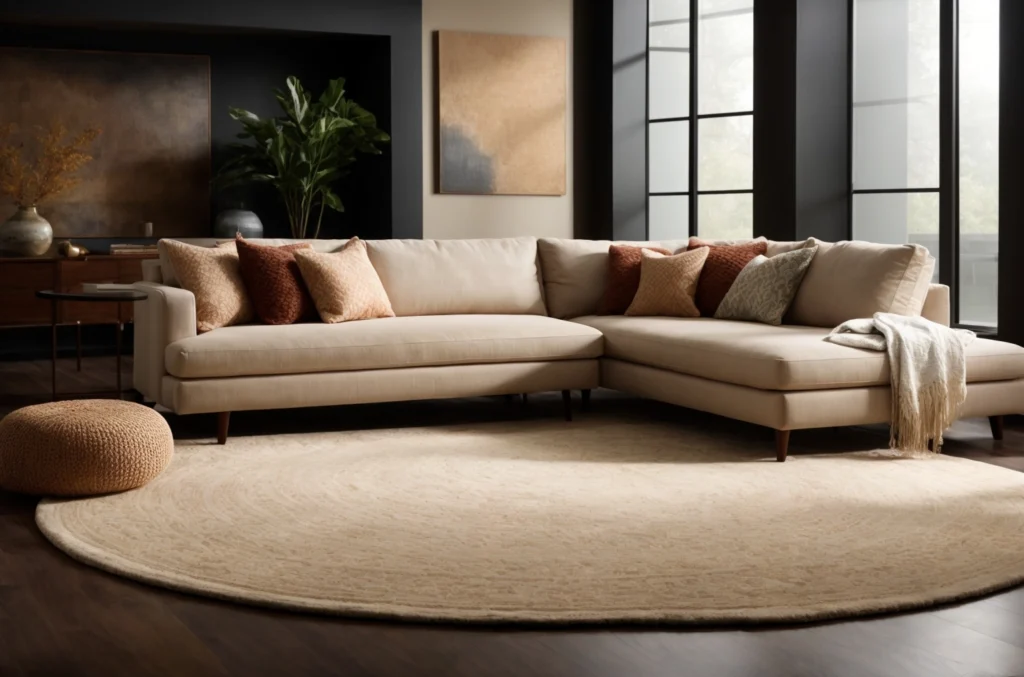
Rugs Add Layering and Dimension
A light rug’s added texture and softness contrasts with the hardness of dark wood floors. It makes the whole space feel warmer and multi-layered.
Don’t be afraid to mix different light rug styles like florals, geometrics and sheepskins to designate different functional areas.
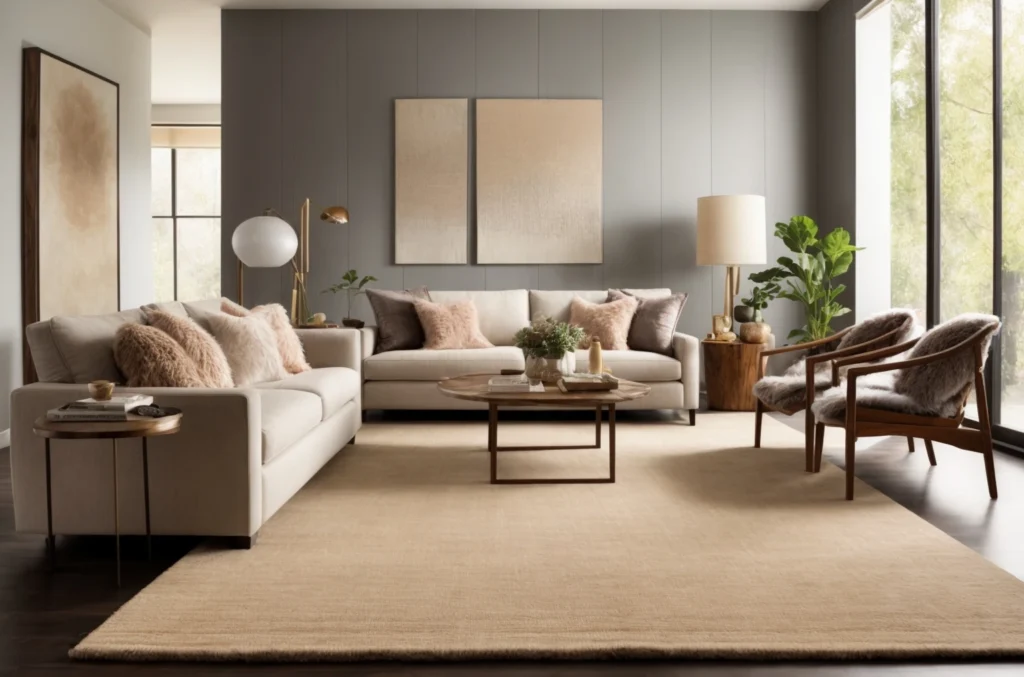
Frequently Asked Questions
Many design dilemmas arise when pairing light furniture with dark hardwood floors. Here are answers to some common questions:
Should furniture be darker or lighter than floors?
As a general rule, interior designers recommend furniture that is lighter than floors for visual contrast. Dark-on-dark can feel too heavy and monotone. Light furniture stands out better against dark backdrops.
However, extremely pale furniture can also look disjointed from very dark floors. The goal is picking light woods with enough color contrast to pop but not clash.
What colors go well with dark wood floors?
The best furniture colors for dark floors are light, warm-toned woods like oak, birch and maple. Crisp whites and pale neutrals like cream and tan can also work well. Avoid very cool grays and washed-out whites that may clash.
Upholstery and accent colors like sky blue, sage green and soft peach complement dark floors nicely. Just don’t overdo bright colors.
What color wood floor goes with gray walls?
For a popular modern look, pair light gray walls with dark wood tone floors like walnut. The darkness grounds the space and creates cohesion. White or limed oak floors also go nicely with gray walls for a brighter feel.
What color furniture goes best with dark wood floors?
Light, warm-toned woods complement dark floors best. The lightness creates contrast while the warm undertones tie into the red/brown notes in the flooring.
Some good options include oak, maple, birch, ash and pine. Crisp white painted woods and upholstery provide even more pop.
What color couch goes with dark wood floors?
Light neutral couches work beautifully against dark floors. Think white, cream, light tan or soft gray upholstery. Leather sofas in these shades add nice texture. Avoid going too dark with charcoal or black couches.
For maximum contrast, chose couches with exposed light wood legs. Or place on a light area rug.
Mixing Light and Dark Woods with Confidence
The combination of light wood furniture against dark hardwood floors can feel daring. But when done right, it creates a stunning look full of visual interest, brightness and just enough contrast between elements.
The key is finding the right balance for your space. Seek light woods that provide bold but harmonious contrast against floors. Don’t be afraid to mix in light rugs and fabrics for added layers.
You can confidently mix light and dark woods with the guidelines provided to achieve a showstopping but curated aesthetic. Don’t be afraid to experiment with colors and pairings until you find your perfect balance. The results will be timelessly elegant.
